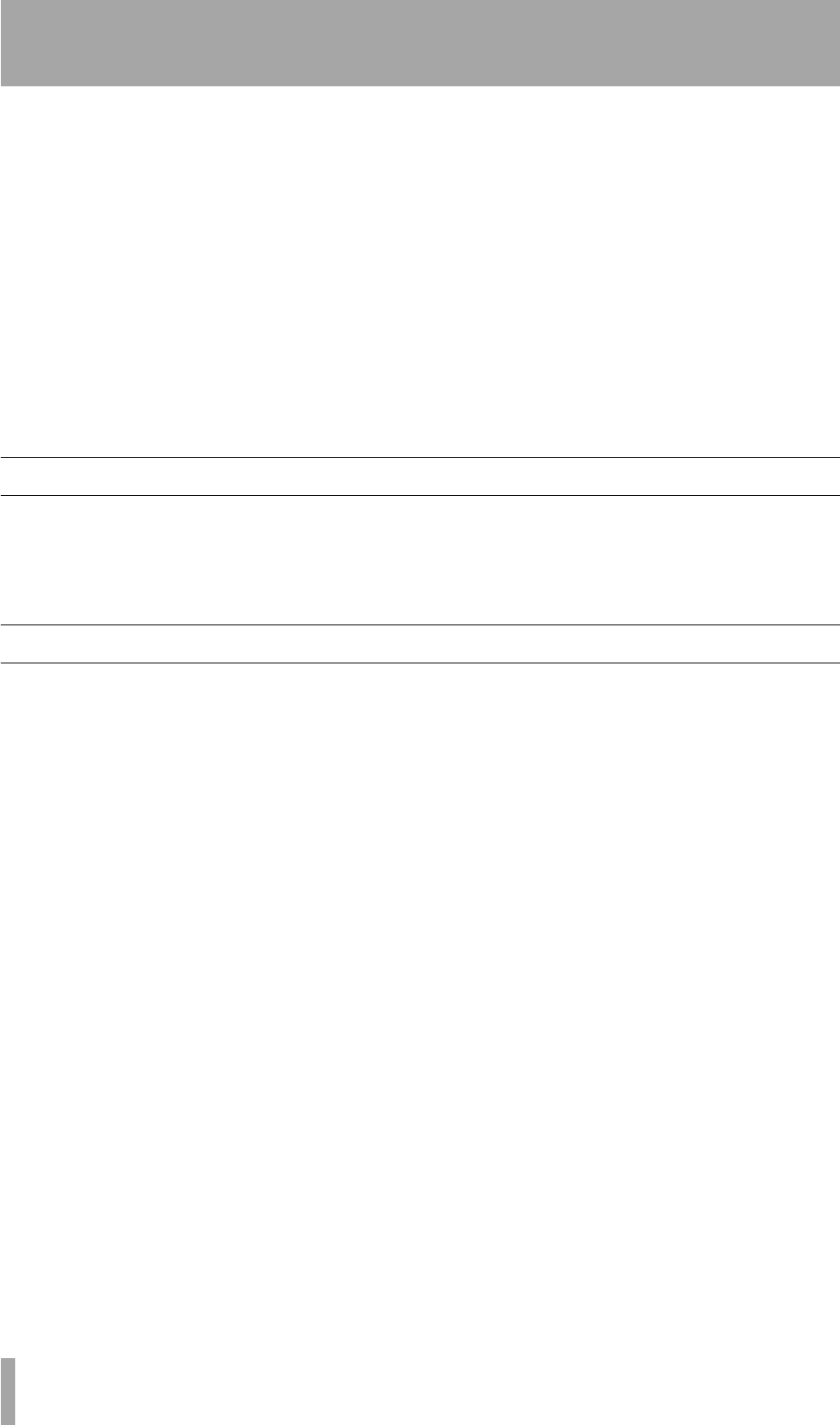
4 TASCAM DM-3200 Automation Guide
1 – Introduction
The DM-3200 is capable of writing and reading mix moves as well as editing and refining mix moves during
replay, all synchronized to timecode. No external computer is necessary, as all control of the automation is
made from the DM-3200’s control surface.
Automated mixes are stored on the DM-3200’s CF
card as part of a project and can be off-loaded via the
TASCAM Mixer Companion Software to a personal
computer, as well as being easily transported on the
card between facilities equipped with the DM-3200.
Here are a few reasons to use mixer automation:
• Tedious moves, (such as mutes), that occur at the
same place in the program each time can be written
to the automation system for playback. This allows
you to focus on the creative aspect of listening and
mixing, instead of the mechanical aspect of press-
ing the mute keys at the right time, every time.
• Mix moves can be refined to your satisfaction then
the automation system will read those moves back
every time in exactly the same way.
• A mix can be recalled at a later time for further
refinement.
The DM-3200’s automation system was designed to
be intuitive, using the mixer’s familiar control sur-
face and a minimum number of keystrokes, to stay
out of the way of the creative process of mixing.
Using This Manual
The following type conventions are used in this man-
ual:
BOLD CAPS for physical keys on the mixer’s control
surface.
LIGHT CAPS or Light First Letter Caps for on-screen con-
trols in the display .
First Letter Caps for names of operational modes and
functions.
Automated Controls
The following mixer controls of the DM-3200 can be
automated:
• Fader levels
•Mutes
• Panning (including surround panning parameters,
LFE level, etc.)
•
EQ settings: Gain, Frequency, Q, EQ On/Off
switching, individual EQ band switching and
TYPE
switching between High/Low Pass Filter, Peaking
& Shelving
• Auxiliary send levels, Pre/Post switching and pan/
balance settings
• Auxiliary master send levels
•
COMPressor settings: threshold, ratio, attack,
release, etc.
•
GATE settings: threshold, range, hysteresis, attack,
hold, decay, etc.
• Buss master levels
• Library recall (all libraries)
The following mixer controls of the DM-3200 can-
not be automated:
• Digital trim
• Effect settings
• Buss assignments
• Analog TRIM
• Control Room monitor switching
• LCD navigation
• Transport control
• Fader layer switching
• Global mixer setup parameters
Moves for different mixer controls do not have to be
automated in the same pass. Just as in multi-track
recording, it is possible to concentrate on one spe-
cific control at a time, building up the automated mix
over a number of passes.
The DM-3200’s automation system allows this to
occur by intelligently switching automation modes
transparently on a per control basis.
This work done by the DM-3200 automation system
provides a high degree of flexibility while not requir-
ing constant attention from you. Of course, the DM-
3200’s automatic mode switching may be over-rid-
den at any time for “power user” operation.
The automation is synchronized to timecode. This
could be external Linear Timecode (LTC or com-
monly referred to as SMPTE/EBU) or MIDI Time-
code (MTC) from either the
MIDI IN port or through
the USB connection.
Alternatively, the DM-3200’s own internal timecode
generator can be used to synchronize the automated
mix moves and slave the external recorder.
The event resolution for mix moves on the DM-3200
is one event per quarter timecode frame. At a time-


















